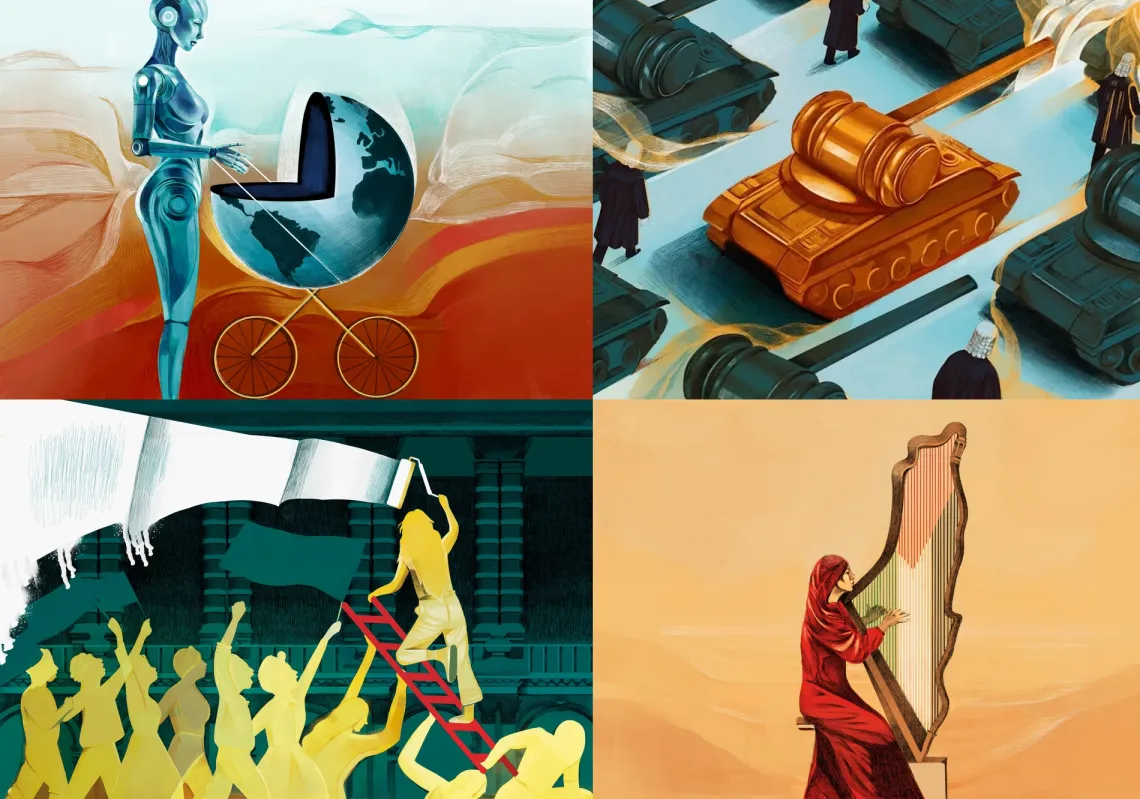Hella Berent is an exceptional modern artist.
A sculptor, painter and ceramist all in one. Fuelled by philosophy, mythology, poetry and global cultures, she reconciles her German spirit with fragments of influence from India, China, Arabia, Persia, ancient Egypt, and the Americas.
Berent’s incorporation of Arabic poetry, handwritten on her sculptures and ceramic works, serves as a further testament to their transcendental nature.

Shortly after graduating from fine arts at the University of Hamburg in 1976, Berent founded the Künstlerhaus – the artistic educational house of Hamburg.
She soon relocated to Italy. At her first studio in Florence, she came across the concept of expanded drawing – an exploration of spatial volume.
Following her father’s untimely demise in 1979, Berent became preoccupied with the themes of death and mortality, travelling as far as Egypt to understand them better.
In 1981, Berent headed to New York, where she spent a year, and in the late 1980s, she returned to Germany and became a member of the staff of Erhard Klein Gallery.
Black and blue
Around this time, she delved into the study of black as a material, followed by an exploration of blue as a sculptural medium, documenting the findings of her experimentations in books and photographs.
In the following years, her travels took her to Bombay and New Delhi, where she immersed herself in the culture of Tibetan Buddhists, incorporating sharply cut stones into her sculptures, and arranging them into meticulous linear patterns.
Her travels extended to Turkey, Egypt, and Tunisia, with exhibitions in both Syria and Iran.















